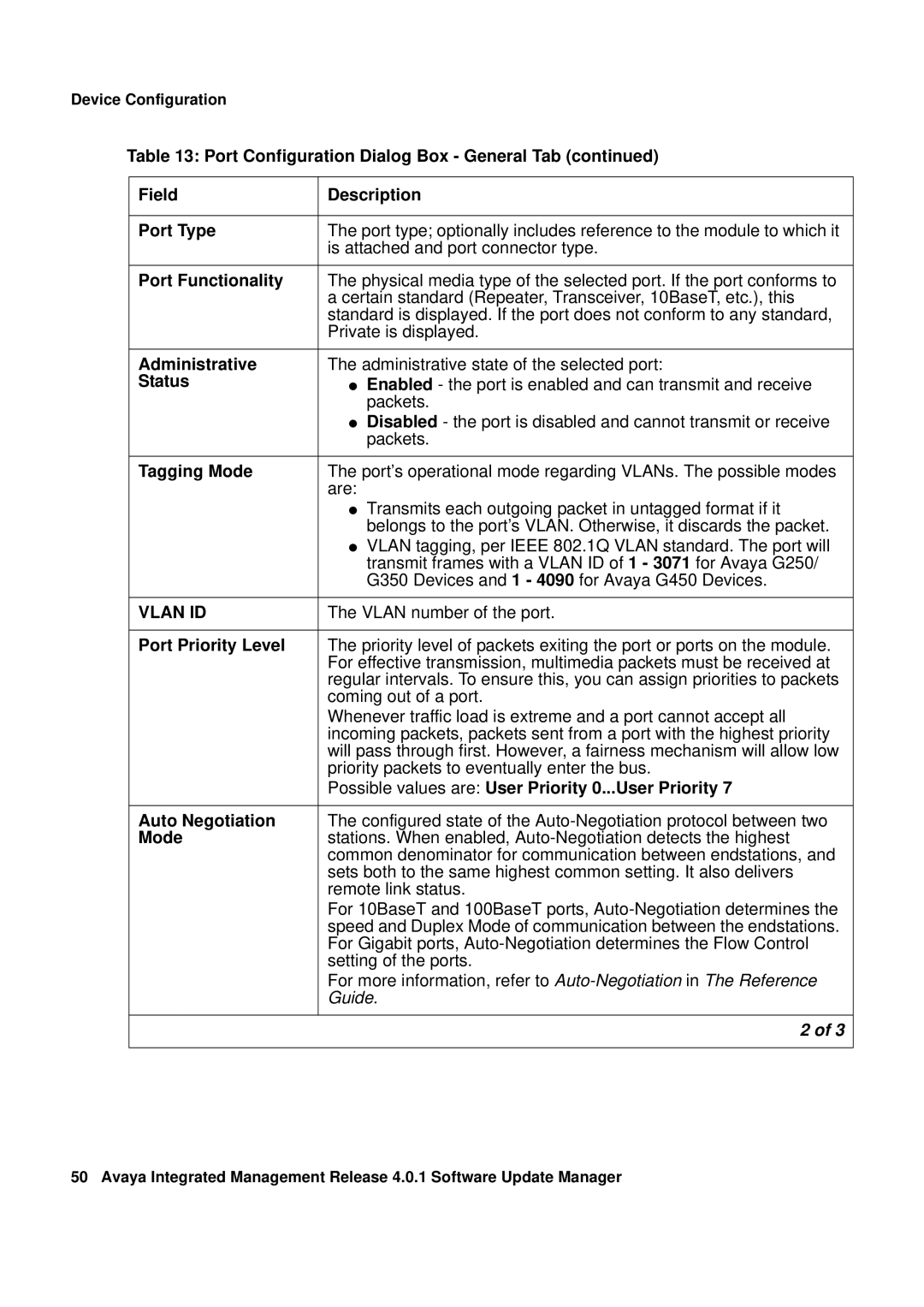Device Configuration
Table 13: Port Configuration Dialog Box - General Tab (continued)
Field | Description |
|
|
Port Type | The port type; optionally includes reference to the module to which it |
| is attached and port connector type. |
|
|
Port Functionality | The physical media type of the selected port. If the port conforms to |
| a certain standard (Repeater, Transceiver, 10BaseT, etc.), this |
| standard is displayed. If the port does not conform to any standard, |
| Private is displayed. |
|
|
Administrative | The administrative state of the selected port: |
Status | ● Enabled - the port is enabled and can transmit and receive |
| packets. |
| ● Disabled - the port is disabled and cannot transmit or receive |
| packets. |
|
|
Tagging Mode | The port’s operational mode regarding VLANs. The possible modes |
| are: |
| ● Transmits each outgoing packet in untagged format if it |
| belongs to the port’s VLAN. Otherwise, it discards the packet. |
| ● VLAN tagging, per IEEE 802.1Q VLAN standard. The port will |
| transmit frames with a VLAN ID of 1 - 3071 for Avaya G250/ |
| G350 Devices and 1 - 4090 for Avaya G450 Devices. |
|
|
VLAN ID | The VLAN number of the port. |
|
|
Port Priority Level | The priority level of packets exiting the port or ports on the module. |
| For effective transmission, multimedia packets must be received at |
| regular intervals. To ensure this, you can assign priorities to packets |
| coming out of a port. |
| Whenever traffic load is extreme and a port cannot accept all |
| incoming packets, packets sent from a port with the highest priority |
| will pass through first. However, a fairness mechanism will allow low |
| priority packets to eventually enter the bus. |
| Possible values are: User Priority 0...User Priority 7 |
|
|
Auto Negotiation | The configured state of the |
Mode | stations. When enabled, |
| common denominator for communication between endstations, and |
| sets both to the same highest common setting. It also delivers |
| remote link status. |
| For 10BaseT and 100BaseT ports, |
| speed and Duplex Mode of communication between the endstations. |
| For Gigabit ports, |
| setting of the ports. |
| For more information, refer to |
| Guide. |
|
|
| 2 of 3 |
|
|
50 Avaya Integrated Management Release 4.0.1 Software Update Manager
